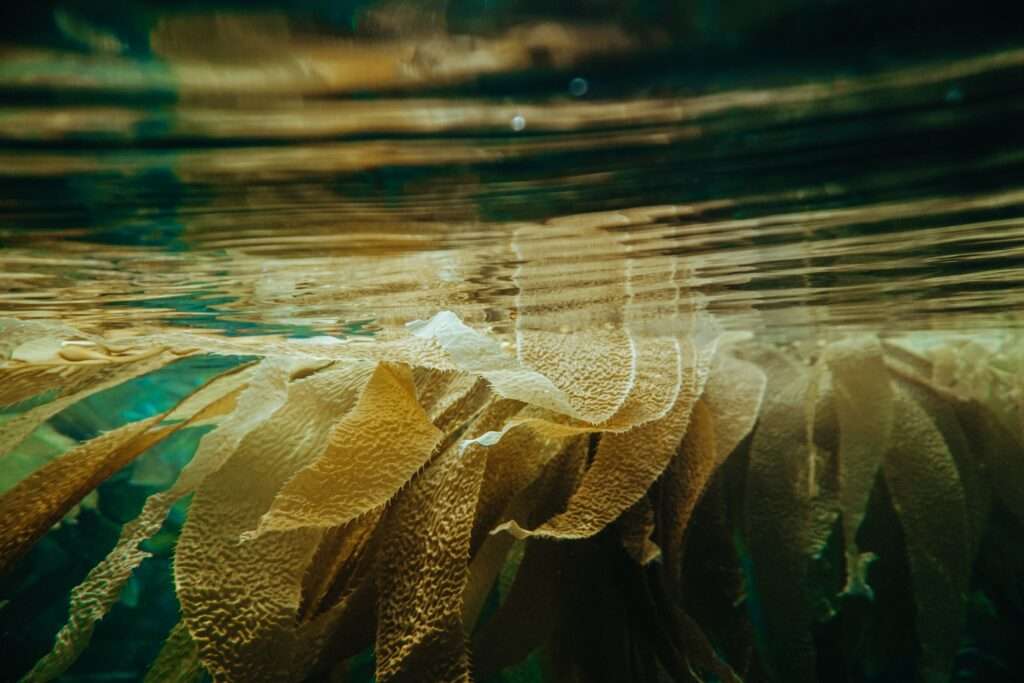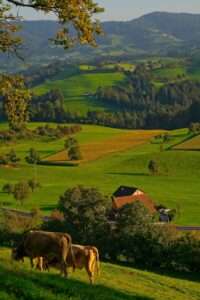By Ruscena Wiederholt
Kelp may bring up images of underwater forests and frolicking sea otters, but there’s more to this seaweed than meets the eye. These ecosystems are powerhouses of marine diversity, and kelp is found in products from food to soil conditioners. Now you can wear it, too, as innovators find success in turning this giant seaweed into fiber.
The startup Keel Labs says its yarn made from kelp comes with a significantly lower environmental footprint than other common fibers. In addition, kelp is like the teenager of the crop world, sprouting up to 18 inches per day. Could the ocean hold the key to eco-friendly fashion?
Launching a kelp-based fiber
After witnessing the unsustainable practices in the fashion industry, Aleks Gosiewski and Tessa Callaghan founded Keel Labs in 2017. With a mission built on ocean-based materials, the startup recently launched its flagship product, Kelsun yarn.
Produced from biopolymers — large molecules obtained from living things — extracted from kelp, it’s mixed with cotton to produce a surprisingly soft yarn. Obviously, it’s aimed at the fashion industry, but it’s also applicable to home furnishings, interiors and motor vehicles.
The high cost of fashionable fiber
Kelp’s potential makes sense. It’s hardly news that the fashion industry has sustainability issues, starting with its roots: fiber.
For starters, many synthetic fibers, like polyester and acrylic, are produced from petroleum, a nonrenewable resource. They also shed a lot of microfibers into waterways when they’re washed. Globally, they contribute around 35 percent of the microplastics in oceans — making them the largest source, according to a report from the International Union for Conservation of Nature. Polyester production also comes with a sizable carbon footprint — up to 4 percent of the world’s carbon emissions.
On the other hand, natural fibers have their own set of problems. For example, 2,700 liters of water is used to make one cotton shirt, according to the World Resources Institute. That’s what you’d drink in over two years. This hefty use can be linked to dwindling water supplies in some parts of the world.
Kelp’s light footprint
Perhaps the solution was growing just offshore. Currently, Keel Labs uses naturally harvested kelp, although it plans to look toward farmed kelp as it scales up. Thankfully, wherever it is found, kelp provides a number of benefits.
“It has much lower carbon dioxide emissions by comparison to essentially any fiber that’s on the market currently,” Mekeel said. “It also represents a significant reduction in water usage.”
Kelp farms have a low environmental footprint since they don’t need pesticides, fertilizers or freshwater. Kelp also sequesters carbon in the ocean, helping combat ocean acidification caused by climate change. This, in turn, benefits shellfish and marine food webs including fish, seabirds and whales.
Kelp also cleans up nutrient runoff in coastal waters. For instance, around New York City, environmental organizations are experimenting with kelp farms to remediate polluted waters. And kelp forests provide habitats for numerous plants and animals. However, kelp farms do not appear to support the same levels of biodiversity as these natural areas.
For More Visit https://www.triplepundit.com/story/2023/kelp-save-fashion-industry/781576



